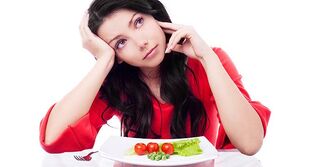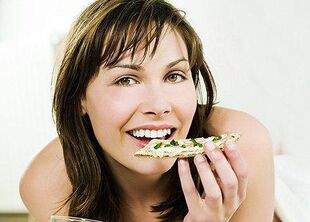Pancreatitis is one of the most serious diseases of the digestive system. Distinguishing between acute and chronic pancreatitis, each has its own characteristics and treatments.

Pancreatitis is one of the most serious diseases of the digestive system. Distinguishing between acute and chronic pancreatitis, each has its own characteristics and treatments.
But one thing doesn't change in pancreatitis: the old lifestyle and nutrition will remain in the past, because the basis of pancreatitis treatment is an almost lifelong diet. The pancreas doesn't tolerate nutritional flaws, reacting immediately with pain and indigestion.
Basic knowledge of pancreatitis
Pancreatitis is an acquired disease that develops from trauma to the abdomen, viral damage to the pancreas, disorders of the liver and gallbladder, after alcohol and other toxic substances, with frequent and severe nutritional disorders - fasting, long sitting. on diet for weight loss.
The main signs of pancreatitis are:
- pain in the abdomen - dagger sharp, near loss of consciousness in acute pancreatitis, or dull pain or pain in the chronic version;
- nausea and vomiting;
- stool disorders, often more severe diarrhea, fever; Strong weight loss
- .
Acute pancreatitis is usually hospitalized. Chronic exacerbations can be treated at home, but only under the supervision of a doctor. Self-medication in the case of pancreatitis is very dangerous with the development of complications up to pancreatic necrosis (enzyme dissolution of the glandular tissue, self-destruction of the gland) and the development of peritonitis, which is fatal.
Nutrition therapy for pancreatitis
Drug, enzyme, and dietary therapy for pancreatitis is selected by the doctor, based on the patient's condition and laboratory data. However, the general principles of adjusting to the diet always stay the same. They help the digestion and the pancreas rest, meaning they relieve pain and normalize health.
Nutrition in the face of pancreatitis is severely limited - most conventional products will have to be forgotten.Need to eat regularly, about 5-6 times a day - every 2, 5-3 hours, rest for 8 hours. But the mass fraction should be small - about 200-250 g, especially in the first after exacerbation of the disease.
All dishes are mechanically processed - they are actually used in pureed form. Then, when the inflammation subsides, larger particles appear in the food, but you need to chew the food well.
Since the whole body is not properly supplied with the nutrients in pancreatitis,needs to increase the protein content of the diet (meat, fish, dairy products) - up to 140- on average150 g of protein per day.
But fats and carbohydrates, which are very stressful for the pancreas, are limited to the minimum possible. About 300 g of carbohydrates per day provided, fat - no more than 70-80 g.
Analgesic products - meat and fish broths, cabbage juices and broths - are excluded from the diet; During the period of severe pain, treatment should be fasted for 1-2 days under the supervision of a doctor.
In case of pancreatitis, it is necessary to drink more water -should drink up to 2 liters of purified water per day, drink 2-3 sips of water every half hour in a day.

Naturally, with pancreatitis, you must completely stop smoking and drinking. They are the most powerful possessed provocators.
Excludes what?
The banned foods list will be quite impressive and may disappoint you at first. However, if these restrictions are not complied with, the relief can go on for a very long time. Gradually, you can carefully expand your diet, adhere to the general principles of good nutrition.
So during the entire acute phase or moment of the severity of the chronic process it is necessary to exclude:
- beetroot soups, cabbage and borscht soups, okroshka, meat, mushroom and fish soups, main broths;
- fatty meat - pork, lamb, goose and duck;
- internal organs - kidney, heart, brain, liver;
- fried, smoked, salty and spicy foods; canned food
- ;
- sausage;
- fatty fish (catfish, sturgeon, carp); caviar;
- lard, margarine, mayonnaise;
- fatty milk dishes - cream, sour cream, koumiss;
- yolks, boiled eggs;
- millet, corn, barley, legumes;
- cabbage, turnip, turnip, turnip, rutabagas, eggplant, onion and garlic, sorrel, cucumber, tomato and bell pepper;
- citrus, apple (sour variety), grape, pomegranate, cranberry;
- chocolate, preserved;
- spicy fries, sauces, sauces, vinegar, ketchup;
- all carbonated drinks, even mineral water (you just can't get carbonated);
- strong tea and coffee, juice, cocoa;
- all freshly baked cakes and pastries, pancakes, pies, butter cookies.
As you can see, the list of restrictions is quite large, but this is only for the duration of the acute process. Gradually you can gradually expand your portion sizes, but annoying and "heavy" foods will have to be forgotten almost forever.
What can you eat?
This is the first question that comes up after reading the blacklist. Of course, the diet is not very varied, but is aimed at keeping the pancreas calm and reducing inflammation.

Allowed:
- dry bread, toast of yesterday;
- vegetable soup, noodles;
- steamed meat and poultry dishes - cutlets, meatballs, rolls, pate, pureed meat;
- boiled fish fillet (lean), grilled fish, omelet;
- milk, cottage cheese, low-fat and light cheese, kefir;
- vegetable oils and butter (in porridge);
- pureed and stewed vegetables, boiled vegetables;
- pasta, pasta, cereals - oatmeal, semolina, buckwheat, rice;
- unsweetened baked fruit (pear, apple, peach, plum);
- compote, agar, jelly;
- rose water, herbal tea, bran drink.
Of course, the diet is limited, but with the consultation of your doctor, you will gradually expand your menu.
Sample Menu
It should be remembered that this menu can be used at home, when the exacerbation subsides, fasting and food introduction are gradually prescribed at the acute stage of pancreatitis. When making a diet, remember: have at least five meals, with calories and calories comparable to digestion.
A 5-day menu for pancreatitis
Day 1
- Breakfast: mashed potatoes - 100-150 g, 2 white bread, 200 ml of mineral water (no carbonated! ).
- The second breakfast: steamed chicken cutlets - 100 g, omelets - 100 g, dry white bread - 1 slice, 200 ml of milk (kefir).
- Lunch: vegetable soup - 200 ml, boiled fish - 100 g, pureed zucchini - 100 g, white bread - 1 slice, rose hip broth - 200 ml, one-third banana.
- Afternoon snack: fruit jelly - 100 g, fresh non-fat cheese -100 g, mineral water - 200 ml.
- Dinner: oatmeal -200 g, pumpkin puree - 100 g, steamed meatballs - 2 pieces. , diluted tea with milk, a slice of black bread.
Day two
- Breakfast: buckwheat porridge -200 g, 2 white bread, 200 ml milk tea.
- The second breakfast: steamed beef cutlet - 100 g, carrot soup - 200 g, dry white bread - 1 slice, 200 ml of dried fruit.
- Lunch: pho - 200 ml, boiled chicken - 100 g, pureed vegetables - 100 g, white bread - 1 slice, mineral water - 200 ml, half grilled pear.
- Afternoon snack: apple sauce - 200 g, mineral water - 200 ml, Maria biscuits - 100 g.
- Dinner: -200 g mashed potatoes, low-fat cheese - 100 g, cheese sandwich (30 g cheese, a slice of toast), diluted tea with milk, a slice of black bread.
The third day
- Breakfast: pureed squash and pumpkin - 100-150 g, 2 white breads, 200 ml of mineral water (no carbonated! ).
- The second breakfast: low-fat cheese - 100 g, half a baked pear, dried white bread - 1 slice, 200 ml soft drink.
- Lunch: broccoli soup - 200 ml, boiled meat, mashed potatoes - 100 g, mashed potatoes - 100 g, white bread - 1 slice, chamomile tea - 200 ml.
- Afternoon snack: stewed vegetables - 200 g, cheese - 50 g, mineral water - 200 ml.
- Dinner: buckwheat porridge -200 g, kefir - 200 g, half a banana, a slice of white bread.
Wednesday
- Breakfast: mashed potatoes - 100-150 g, 2 white bread, 200 ml of mineral water (no carbonated! ).
- The second breakfast: rice porridge - 200 g, dry white bread - 1 slice, 200 ml of milk (kefir).
- Lunch: vegetable soup - 200 ml, boiled fish - 100 g, carrot puree - 100 g, white bread - 1 slice, rose hip broth - 200 ml, one-third banana.
- Afternoon snack: omelet - 100 g, grilled sweet apple, mineral water - 200 ml.
- Dinner: oatmeal -200 g, pumpkin puree - 100 g, steamed meatballs - 2 pieces. , diluted tea with milk, a slice of black bread.
Thursday
- Breakfast: oatmeal -200 g, pumpkin puree - 100 g, steamed meatballs - 2 pieces. , diluted tea with milk, a slice of black bread.
- The second breakfast: steamed chicken cutlets - 100 g, omelets - 100 g, dry white bread - 1 slice, 200 ml of milk (kefir).
- Lunch: pasta soup - 200 ml, steamed fish cutlet - 100 g, pumpkin puree with carrot - 100 g, white bread - 1 piece, rose water - 200 ml, Maria biscuit- 2 pcs.
- Afternoon snack: grilled fruit - 100 g, fresh non-fat cheese -100 g, mineral water - 200 ml.
- Dinner: mashed potatoes - 100-150 g, 2 white breads, 200 ml of mineral water (still! ).
With adherence to the advice of a doctor, strict adherence to diet and all prescriptions, the patient can quickly get into remission. But a rather strict diet with "heavy" food restriction will last from 3 to 6 months. And then you'll constantly need to limit fatty, fried, seasoning, and canned foods.

































